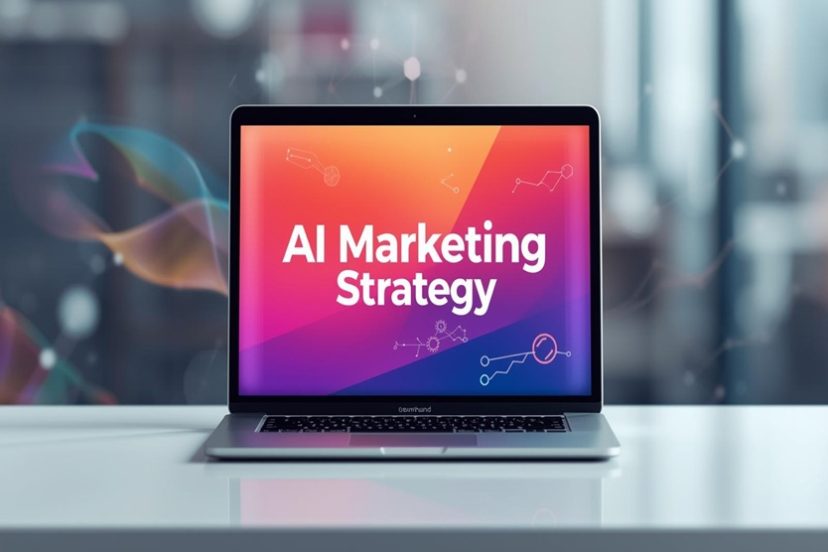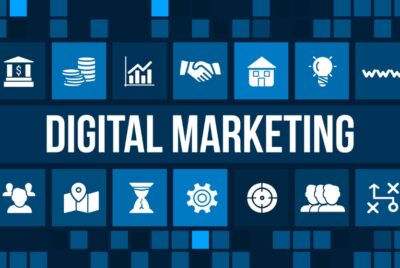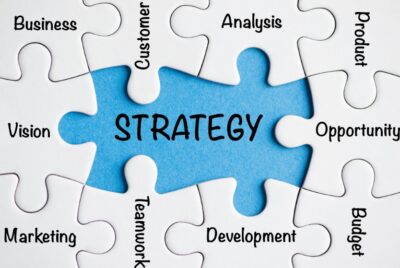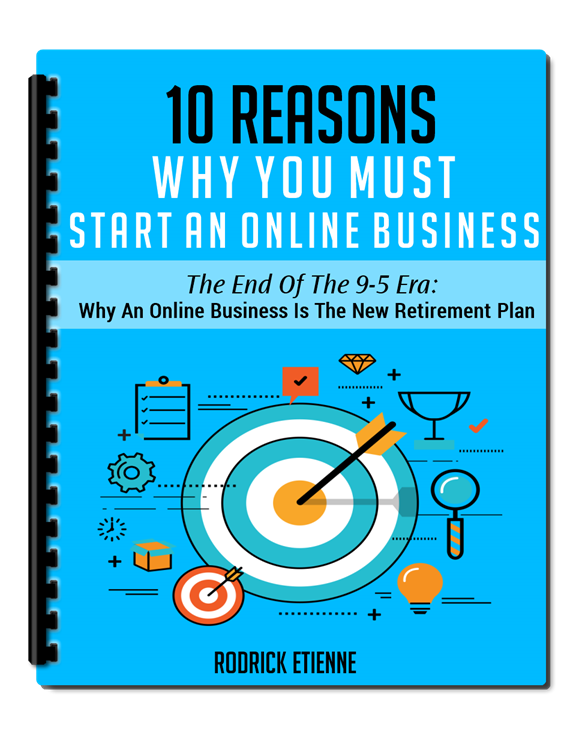For entrepreneurs, navigating an economic downturn can feel like an uphill battle. Faced with shrinking budgets,…
12 Mindset Shifts To Protect Your Business From Becoming Obsolete In The Age Of AI

Artificial intelligence is not coming—it’s already here. And it’s rewriting the rules of business faster than most entrepreneurs are prepared for.
Every week, we see another headline: AI systems outperforming humans at specialized tasks, startups growing to millions in revenue overnight using automation, and entire industries being forced to rethink their models.
For business owners, this isn’t just another technological wave. This is a business survival moment.
The truth?
Companies that fail to adapt will be replaced. Those who do adapt, however, will find new ways to scale, innovate, and dominate markets that once seemed out of reach.
The difference between the two comes down to mindset.
Discover 12 mindset shifts every entrepreneur and business owner must adopt to keep their business from becoming obsolete in the age of AI.
You’ll also find practical checklists, examples, and strategies you can apply immediately to safeguard your future.
Let’s dig in.
1)) Shift From “AI Is a Threat” to “AI Is a Partner”
The first and most critical mindset shift is how you view AI. Too many entrepreneurs look at AI tools as competitors that are coming to steal jobs, customers, or entire business models.
The reality is AI is not here to replace entrepreneurs—it’s here to empower them. If you see AI as a partner, you’ll use it to multiply your productivity, creativity, and decision-making.
AI Partnership Practices
- Delegate Repetitive Work: Offload data entry, scheduling, or content drafts to AI so you can focus on growth and leadership.
- Enhance Creativity: Use AI brainstorming tools to spark ideas for campaigns, products, or customer experiences.
- Strengthen Your AI Marketing Strategy: Combine AI-powered customer insights with human intuition to create campaigns that connect on both data-driven and emotional levels.
Example: A small e-commerce business uses AI to analyze customer behavior and recommend products.
Instead of fearing that automation will make their sales team irrelevant, they retrain the team to focus on upselling and building deeper customer relationships.
Sales increase, not decrease.
2)) Shift From “Static Business Models” to “Agile, Adaptive Models”
In the AI-driven era, rigid business plans can sink your company. AI technologies evolve weekly, which means the systems that give you a competitive edge today could become obsolete tomorrow.
Flexibility isn’t a bonus anymore—it’s a survival requirement.
Adaptive Business Blueprint
- Review & Revise Quarterly: Don’t wait years to pivot. Build quarterly innovation reviews into your company calendar.
- Adopt a Test-and-Learn Culture: Roll out AI-driven projects in small sprints. Collect data, then adjust quickly.
- Future-Proof With Scenario Planning: Build at least three scenarios for how AI could reshape your industry over the next five years. Prepare strategies for each.
Checklist For Agility
- Does your team have a rapid feedback system in place?
- Are you allocating budget for experimentation?
- Can your current model adapt to new AI tools without a complete overhaul?
3)) Shift From “Efficiency Only” to “Efficiency + Innovation”
Most businesses adopt AI with one goal: efficiency. They want to cut costs, speed up workflows, or reduce staffing needs.
While efficiency is important, it’s only half the story. The real winners in the AI age are those who use it to innovate—launching products, services, or customer experiences that competitors can’t match.
Innovation Hacks With AI
- Customer Experience Mapping: Use AI tools to predict customer needs and design services around them.
- Rapid Prototyping: AI can help create mockups, product designs, or even test-market ads in hours instead of weeks.
- AI Marketing Strategy Booster: Let AI generate hundreds of variations of ad copy and creative, then split-test to uncover winning campaigns faster.
Example: A fitness brand didn’t just use AI to cut down customer service response time.
They created a personalized AI fitness coach that delivers tailored workouts. What began as efficiency evolved into an entirely new revenue stream.
4)) Shift From “Gut Decisions” to “Data-Driven Decisions”
Entrepreneurs pride themselves on intuition. And while gut instincts have their place, in the age of AI, relying only on them is dangerous.
Data is abundant, and AI makes it accessible in ways that were unimaginable a decade ago.
Data-Driven Leadership Guide
- Invest In Data Literacy: Train your team to understand and interpret AI-driven analytics.
- Use Predictive Analytics: Instead of reacting to market changes, forecast them.
- Balance Human Judgment With AI Insight: Let the data guide decisions, but validate with human context.
Warning Sign: If your competitors are running predictive AI models on customer churn, and you’re still relying on quarterly sales reports, you’re already behind.
5)) Shift From “Generalist Marketing” to “Hyper-Personalized Marketing”
Generic campaigns no longer cut it. Customers expect personalized, real-time communication that feels tailor-made.
AI makes this possible at scale. Businesses that don’t embrace personalization will look outdated and irrelevant.
Personalization Power Moves
- Segment With Precision: Use AI to micro-segment audiences based on behavior, not just demographics.
- Dynamic Campaigns: Run ads that shift in real time depending on user interaction.
- AI Marketing Strategy Integration: Feed AI data from email, social, and web interactions to craft personalized customer journeys.
Example: A local real estate agency leverages AI to send property recommendations to buyers based on browsing history. Conversions spike because clients feel like the agency “just gets them.”
6)) Shift From “One-Time Sales” to “Ongoing Relationships”
In the AI economy, your biggest asset is not the sale—it’s the customer relationship.
AI tools allow you to build long-term engagement and loyalty, but you need to design your model around continuous interaction.
Relationship Retention Kit
- Subscription Models: Explore recurring revenue streams.
- AI-Powered Loyalty Programs: Automate personalized rewards.
- Feedback Loops: Use AI chatbots to collect insights on customer satisfaction instantly.
Checklist To Build Stronger Relationships
- Are you tracking customer lifetime value, not just acquisition cost?
- Do you have AI systems monitoring churn signals?
- Is your loyalty program evolving based on customer behavior?
7)) Shift From “Closed Systems” to “Collaborative Ecosystems”
Businesses that try to do everything alone will struggle. AI thrives in ecosystems—networks of partners, platforms, and communities. The smartest companies embrace collaboration to stay relevant.
Collaboration Strategies
- API Partnerships: Connect your systems with others to expand functionality.
- Industry Collaborations: Partner with non-competing businesses using AI to share insights.
- Open Innovation Challenges: Invite developers or customers to build on your AI solutions.
Example: A SaaS company partnered with an AI language tool to enhance customer onboarding. Alone, neither product solved the full problem. Together, they delivered a powerful, unique solution.
8)) Shift From “Skill Comfort Zones” to “Continuous Learning”
The half-life of skills has shortened dramatically. What you or your team mastered three years ago may already be outdated. The only way to stay relevant is to adopt a lifelong learning mindset.
Learning Leverage Plan
- Upskilling Roadmaps: Map out AI and digital skills your team needs for the next 12 months.
- Micro-Learning: Encourage short, frequent training instead of long, rare sessions.
- Leadership Development: Ensure you, as the business owner, are also advancing your knowledge of AI.
Checklist For Continuous Learning
- Do employees have access to AI training resources?
- Are you rewarding skill development?
- Is your leadership team setting the example?
9)) Shift From “Local Thinking” to “Global Opportunities”
AI erases borders. A local bakery can sell baking courses worldwide. A small agency can service clients in multiple time zones.
If you only think locally, you’re leaving a massive opportunity on the table.
Global Growth Tactics
- AI-Powered Translation Tools: Offer services in multiple languages.
- Automated Customer Support: Run 24/7 support with AI to serve global markets.
- International Campaign Testing: Use AI to test campaigns in new regions before expanding.
Example: A Sacramento-based coaching business started using AI to translate materials into Spanish and French. Within six months, their client base expanded into three continents.
10)) Shift From “Single Revenue Stream” to “Diverse Income Models”
If AI automates your core product or service, what’s left? Diversification is key. Entrepreneurs must rethink how they generate income and build multiple streams.
Revenue Diversification Playbook
- Add Digital Products: Courses, templates, or memberships.
- AI-Powered Affiliate Partnerships: Let AI recommend relevant partner products to customers.
- Subscription Services: Predictable revenue helps weather disruption.
Checklist For Diversification
- Do you have at least three income streams?
- Are any of your streams future-proofed against automation?
- Are you leveraging AI tools to manage multiple models efficiently?
11)) Shift From “One-Size-Fits-All Leadership” to “AI-Enhanced Leadership”
The age of AI requires a new type of leader—one who can combine human empathy with technological literacy.
Leadership that ignores AI risks creating blind spots that stall growth.
AI Leadership Practices
- Transparent Communication: Explain to teams how AI will be used and why.
- Decision Augmentation: Use AI dashboards to guide strategy but keep human context at the center.
- Culture of Curiosity: Reward employees who experiment with AI tools.
Warning: Employees who feel AI is a threat, not a tool, will resist adoption. Leaders must set the tone for openness and innovation.
12)) Shift From “Reactive Business Strategy” to “Proactive AI Strategy”
Finally, the most important shift is moving from reactive adoption to proactive strategy.
Businesses that wait until competitors force them to adopt AI will always play catch-up.
The ones who thrive treat AI as central to their AI Marketing Strategy and overall growth plan.
Proactive AI Strategy Roadmap
- AI Audit: Identify areas in your business that can benefit from automation or intelligence right now.
- Investment Plan: Budget for AI tools, training, and partnerships.
- AI Roadmap: Set milestones for adoption over the next 6–24 months.
Example: A retail chain created an AI strategy two years ago. By the time competitors started experimenting, this company already had AI-driven logistics, marketing, and customer service systems in place. They pulled ahead and became the local market leader.
Conclusion
The age of AI doesn’t mean the end of entrepreneurship—it means the end of business-as-usual.
By shifting your mindset across these 12 areas, you position your company not just to survive, but to thrive.
Think of AI as a tool to expand your vision, not shrink it. Your business doesn’t need to become obsolete—it needs to become adaptive, agile, and AI-empowered.
The entrepreneurs who embrace these shifts will lead the next generation of market leaders.





